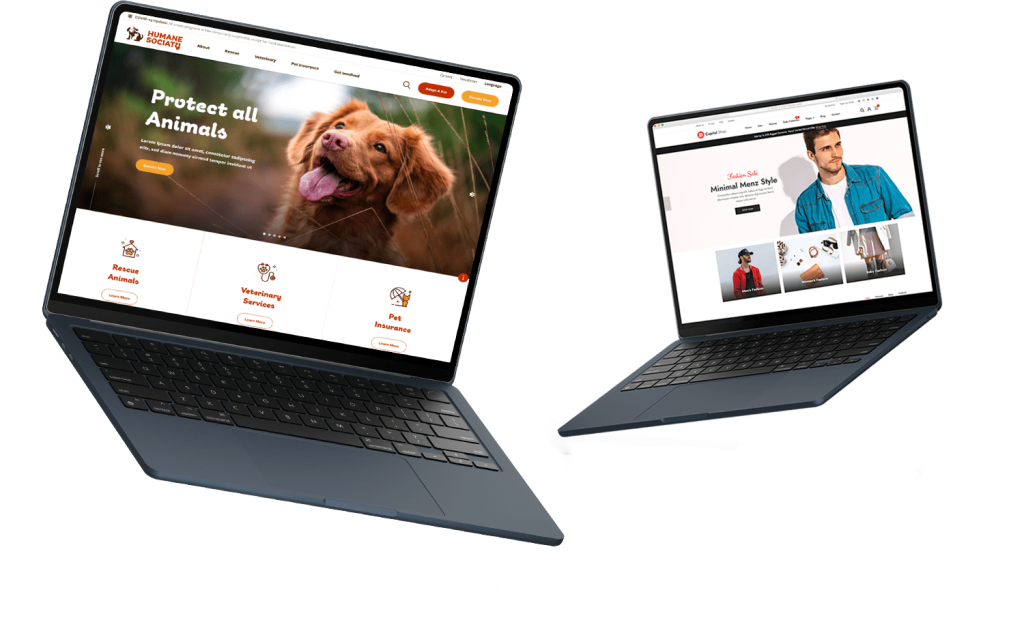Social Media as a Search Engine: Will Social Media Replace Google Search?
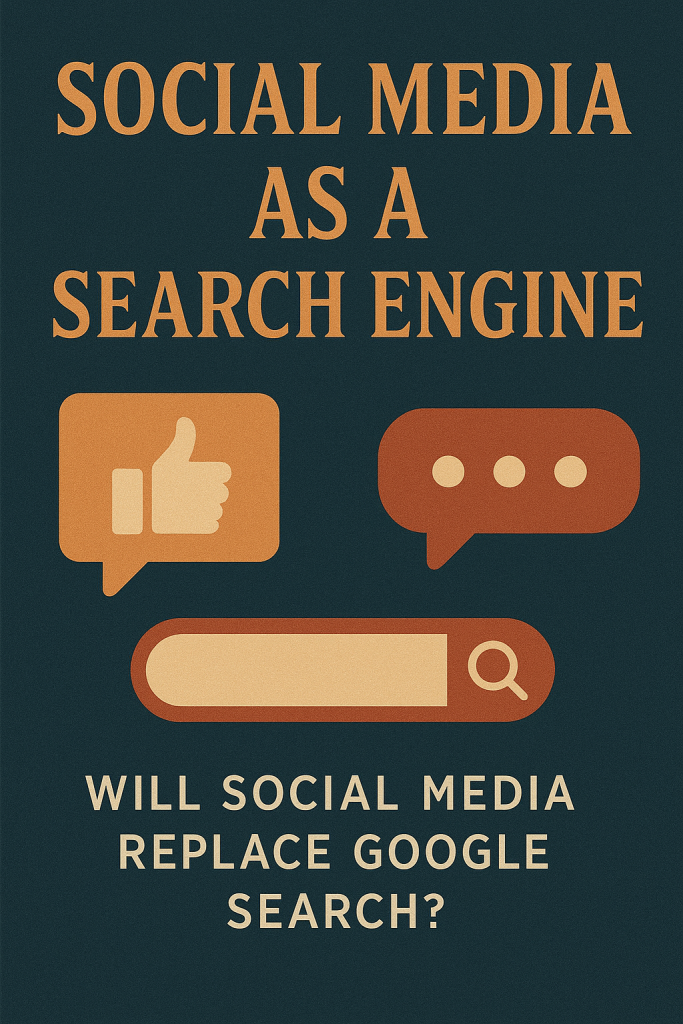
In the digital age, we have seen how social media management has evolved from a simple communication tool to a powerhouse that shapes the way people interact, consume content, and even make purchasing decisions. Platforms like Facebook, Instagram, and LinkedIn are not just social networking sites; they are becoming the new search engines for millions of users. This raises an interesting question: will social media replace Google Search as the primary way people seek information online? In this blog, we will discover the rising effect of social media platforms as search engines, their advantages and disadvantages over traditional search engines, and whether social media is truly poised to replace Google in the near future. The Rise of Social Search The move from traditional search engines to social media platforms for discovering information has been growing steadily over the past few years. What started as an alternative to searching through Google or Bing for product recommendations, local services, and even news updates has now become a norm, especially for younger generations. Facebook ad campaigns, Instagram marketing services, and even LinkedIn advertising solutions have proven to be successful methods of reaching targeted audiences, but they also highlight the trend of integrating search-like features directly within social media platforms. For many people, social media has already become a go-to tool for finding relevant content. Whether they are looking for new fashion trends, tech gadgets, restaurant reviews, or advice on how to do a task, they now turn to social networks like Instagram, TikTok, or Twitter to get these answers. This “social search” behavior shows that social platforms are offering a more personalized, visual, and engaging way of browsing compared to traditional search engines. Why Social Media is Gaining Popularity as a Search Tool 1. Visual Search One of the key reasons people are shifting to social media for searches is the rise of social media content creation, particularly in the form of visual content. Social platforms like Instagram, TikTok, and Pinterest are inherently visual, which makes them ideal for users who want to see, rather than just read, their search results. A simple scroll through Instagram or Pinterest provides a wealth of images, videos, and tutorials that are far more engaging than traditional text-based search results. 2. User-Generated Content (UGC) Another advantage of social media is the wealth of user-generated content (UGC) that can be a better resource for some search queries than professional websites. Reviews, personal experiences, and recommendations shared by users themselves often carry more weight than product descriptions on a company website. This is why social media platforms have become so crucial for product discovery and decision-making. Whether it’s watching a TikTok video on a new kitchen gadget or reading Instagram stories about a local business, UGC is an essential part of the social search experience. This is where Facebook ad campaigns and Instagram marketing services provide businesses with a unique opportunity to showcase their products or services in a way that feels personal and authentic to the consumer. 3. Real-Time, Trending Content Social media platforms are fast-paced and constantly updating with the latest trends and conversations. The Facebook ad campaigns and content on Instagram or Twitter are updated in real time, meaning users have access to relevant content that may not be immediately available on traditional search engines. The immediacy and up-to-the-minute updates offered by social platforms are critical in today’s fast-moving world of news and information. For example, when a new product or service launches, people may turn to Instagram or TikTok first to see real-world demonstrations and reviews rather than searching Google for articles. This sense of instant gratification is something Google can struggle to match, making social platforms more appealing for quick searches. 4. Personalized Search Results Search results on social media are highly personalized based on the user’s interests, past behavior, and even their social circles. Facebook, Instagram, and LinkedIn all use algorithms to tailor content to users, meaning the information you see is often more aligned with your preferences. This contrasts with Google’s approach, which primarily relies on keywords, backlinks, and SEO to determine search rankings. Social media platforms, on the other hand, allow for a deeper, more personalized search experience. For instance, if you’re researching a new city to move to, Instagram’s location-based search feature can show you relevant posts from local residents, giving you insight into what it’s really like to live there. Similarly, LinkedIn advertising solutions can direct you to posts and articles from industry professionals that might be more valuable than a generic Google search result. Social Media vs. Google Search: Which Is Better? While social media is gaining traction as a search engine, there are still several aspects in which Google continues to outperform social platforms. 1. Depth and Accuracy of Information Google is an information powerhouse. It indexes billions of websites, documents, articles, and media, ensuring that users can find the most accurate and comprehensive content available. Social media platforms, on the other hand, prioritize content that is visually engaging or tied to a trending topic, which may not always result in the most detailed or factual information. Google also provides a wide variety of search tools, such as Google Scholar, Google Maps, and Google News, which are specialized for different types of queries. These resources make Google the go-to search engine for many users when they need in-depth research or specific data. 2. Credibility When people turn to social media for information, there’s a level of trust that needs to be established with the content creator or brand. While social media content creation offers more authentic and real-time insights, it’s also rife with misinformation and content that’s influenced by paid promotions. Google’s search algorithm, on the other hand, tends to rank content based on credibility, helping users find trustworthy sources. 3. Targeted Advertising Social media platforms have proven to be greatly effective for businesses through their Facebook ad campaigns and Instagram marketing services. These platforms allow advertisers to target precise demographics with precision, tailoring ads to
Storyselling at Scale: Advanced Narrative Frameworks for Elite Brands
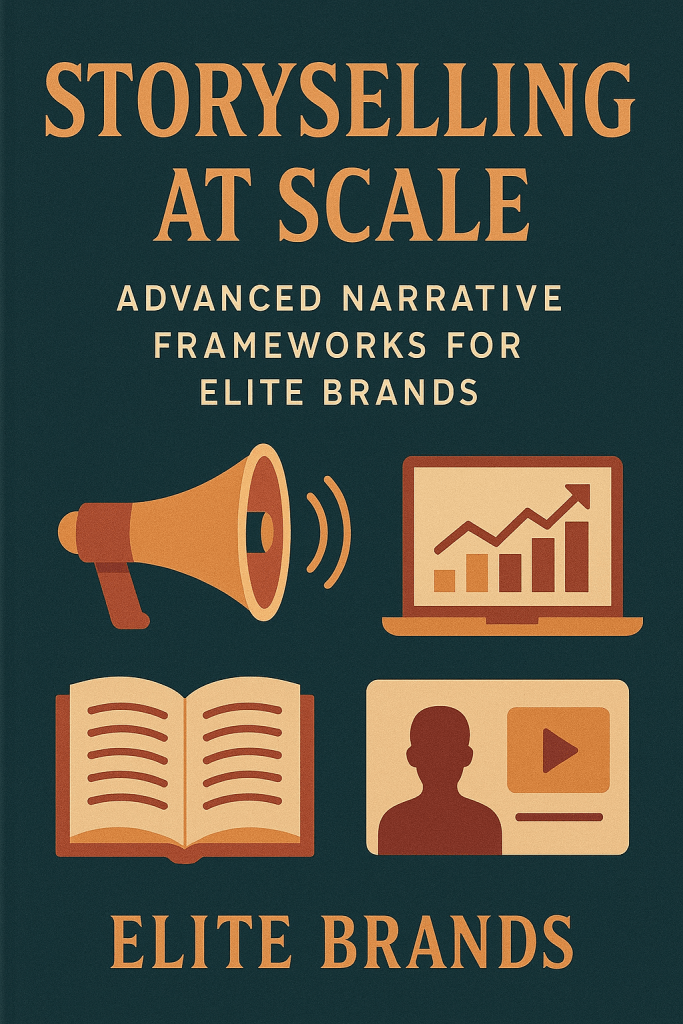
In a digital landscape dominated by endless content and constant noise, elite brands are finding it harder than ever to cut through and connect. Traditional advertising is losing its edge. Even solid storytelling isn’t enough anymore. Enter storyselling—a powerful blend of strategic storytelling and conversion-driven marketing that brings your brand’s narrative to life in ways that inspire action. Today, the most successful brands aren’t just telling stories; they’re selling them at scale. At Speeddot360, we’ve helped brands evolve by implementing brand storytelling solutions that resonate across platforms. Whether you’re developing a brand from scratch or refining a market-leading voice, this blog explores how advanced narrative frameworks can take your business from background noise to unforgettable. The Rise of Storyselling in the Age of Content Saturation We live in an age of oversaturation. Every scroll, swipe, and search bombards users with more content than they can absorb. According to recent studies, the average person sees between 6,000 and 10,000 ads per day. In this hyper-competitive climate, storytelling alone isn’t enough to drive engagement or action. That’s why storyselling is emerging as a game-changer. Unlike traditional storytelling, storyselling is engineered for impact. It’s a seamless fusion of story-driven content with specific intent—whether that’s to generate leads, nurture relationships, or convert browsers into buyers. Think of it as the evolution of narrative strategy, fine-tuned to trigger emotional engagement and decision-making in a measurable, scalable way. Social platforms like TikTok and Instagram are now functioning as search engines. Users no longer “Google” everything—they “search” with their eyes and emotions, looking for relatable content, stories, and creators. This shift forces brands to think less like broadcasters and more like publishers. And to stand out in that feed, your narrative needs to be both magnetic and actionable. Why Elite Brands Are Investing in Narrative Frameworks Elite brands understand that a consistent narrative equals consistent trust. They’re not just sharing stories—they’re building strategic content ecosystems using proven frameworks to influence perception, loyalty, and behavior. These frameworks are designed not just for storytelling but for repeatable storyselling across different buyer journeys and touchpoints. At the core of this approach is brand strategy consulting, where brand voice, values, customer motivations, and market positioning are mapped into a coherent story arc. For example, Nike doesn’t just sell shoes—they sell aspiration through every story they tell. Apple sells simplicity and innovation, not just devices. Airbnb’s story isn’t about renting homes but about “belonging anywhere.” These aren’t random narratives. They’re built using psychological and structural models that connect with audiences on a deeper level—often based on the Hero’s Journey, emotional branding techniques, or frameworks like H.E.T.A. (Hook, Empathy, Transformation, Action). Each piece of content, from a 30-second ad to a blog post, reinforces this larger narrative ecosystem. The Anatomy of Storyselling Frameworks That Scale What makes a storyselling framework “scalable”? It’s not about creating more content. It’s about creating modular stories that adapt and deploy across various formats, channels, and stages of the customer journey. At the heart of scalable frameworks is structure. One powerful model used by top content marketing agencies is the H.E.T.A. structure: Another important strategy is layered storytelling. This involves embedding mini-stories (customer testimonials, product benefits, founder stories) within a larger narrative arc. These can then be repurposed for different platforms—TikTok’s micro-narratives, YouTube’s long-form content, or email marketing campaigns. Scaling Brand Storytelling Across Social Media as a Search Engine The rise of social media as the new search engine has changed everything. Consumers now search through stories, recommendations, and trends. They want brands they can relate to, follow, and engage with—not just buy from. This trend means that storyselling must be platform-aware. The same message won’t work the same way on LinkedIn, TikTok, or Instagram. On TikTok, it’s about micro-stories and authenticity. On Instagram, it’s about visuals and mood. On LinkedIn, it’s professional credibility and purpose. Brands that invest in brand positioning services can tailor their story arcs to align with each platform’s native behavior. The goal is to create a discoverable brand narrative—one that shows up naturally in searches, feeds, and conversations without feeling forced or overly promotional. Integrating Storyselling into Your Brand Strategy To execute storyselling effectively, it must be deeply woven into your brand strategy consulting process. That means starting with your core positioning, identifying your audience’s emotional triggers, and mapping how your product or service fits into their transformation story. This process includes auditing all customer touchpoints for alignment. Is your brand voice consistent across your website, social posts, customer support, and onboarding emails? Are your testimonials reinforcing the same story arc? These details matter because inconsistency breaks the narrative—and, with it, trust. Implementing storyselling at scale also requires internal alignment. Marketing teams, sales, product developers, and even customer support should all understand and communicate the brand story. It’s not a campaign—it’s a culture. From Words to Revenue: How Storyselling Drives Conversions Here’s where storyselling shows its true power: conversions. While storytelling might entertain or engage, storyselling is engineered to move people to act. It’s designed for measurable outcomes. Emotionally resonant content increases retention and reduces bounce rates. It leads to more meaningful email marketing campaigns that actually get opened, read, and clicked. It makes landing pages more persuasive and paid ads more effective. Top brand storytelling solutions aren’t about creativity alone—they’re about performance. They blend narrative craft with marketing science, aligning stories with stages of the funnel. You’re not just telling people who you are—you’re inviting them to become part of your journey. Managing Narrative Consistency in Online Reputation Management In today’s environment, your brand’s story isn’t only what you say—it’s what others say about you. That’s why storyselling must play a role in online reputation management. Customer reviews, user-generated content, and influencer shoutouts are part of your brand narrative. When you’re intentional about storyselling, you can guide the conversation. That might mean responding to negative reviews with empathy and transformation (H.E.T.A. again) or amplifying user stories that align with your mission. Reputation isn’t built in crisis—it’s built every day, through every
How To Appear In Google Answer Box
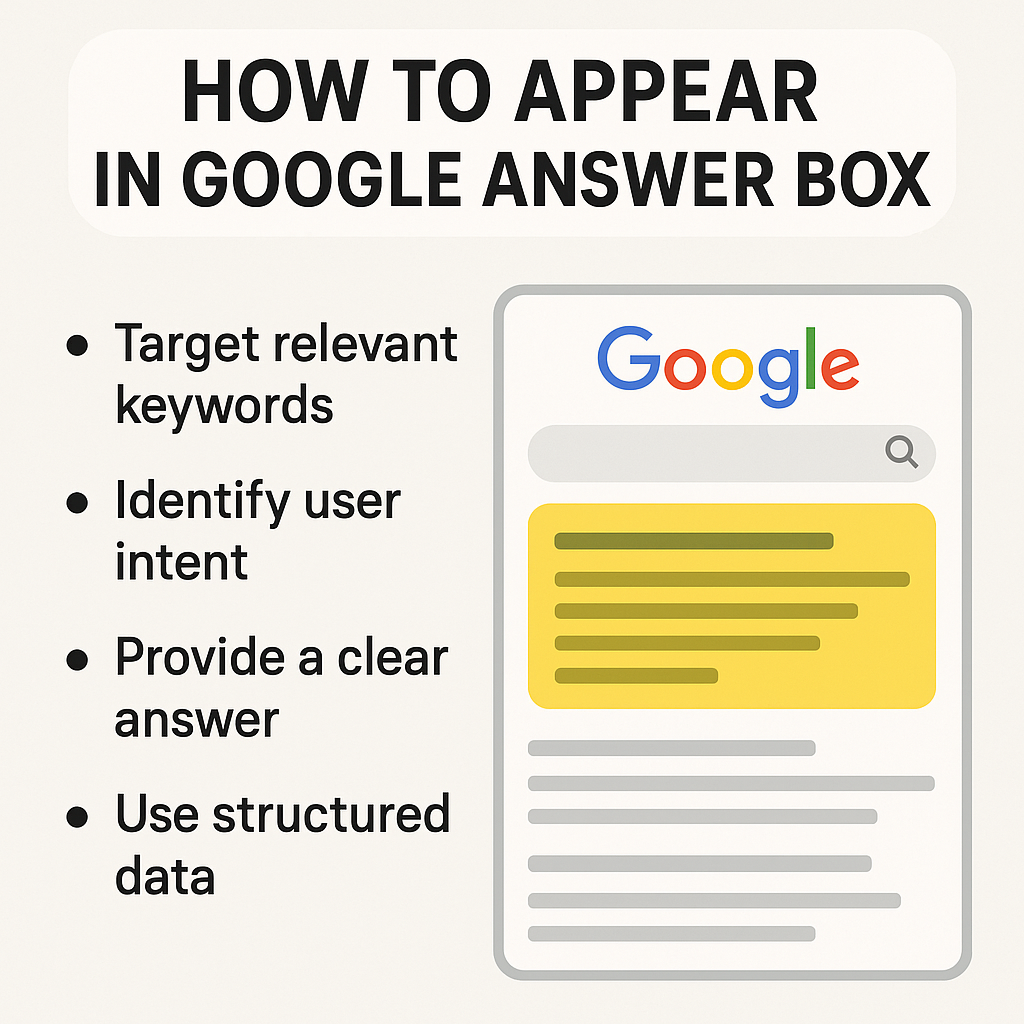
If you’ve ever searched for something on Google and found your question answered right at the top—without even needing to click a website—you’ve seen the Google Answer Box in action. Also known as the Featured Snippet, this high-profile real estate is a powerful traffic magnet. For businesses aiming to boost visibility and credibility online, showing up in the Answer Box is like winning the lottery of organic search. At Speed Dot 360, we help clients optimize their websites for smarter search performance. Appearing in that coveted box requires a combination of technical SEO, strategic content, and the kind of optimization that goes beyond basic keyword stuffing. In fact, our approach blends SEO optimization services, targeted on-page SEO strategies, and well-planned off-page SEO solutions to position content where it matters most—at the very top. But how exactly does your site land there? And what can you do differently to beat your competition to it? Let’s unpack what it takes to own the Answer Box. Understanding How the Google Answer Box Works The Answer Box is designed to quickly provide searchers with concise, accurate information pulled from a relevant web page. Google selects these featured snippets based on how well a piece of content answers a specific query. Rather than being a separate feature you can pay for, it’s entirely earned through search engine trust, structure, and quality. The box can be shown in different formats—paragraphs, lists, tables, or even videos—but the goal is always the same: deliver an immediate answer. Google pulls this data from existing pages in its index, often those that are already ranking on the first page. So the first rule of the Answer Box is this: if your page isn’t already ranking in the top 10, it’s unlikely to be featured. That’s where smart SEO planning enters the scene. Start with Intent-Driven Keyword Research One of the biggest missteps businesses make is targeting the wrong keywords. If your content isn’t aligning with question-based or informational search intent, it’s unlikely to be featured in a snippet. The key is to identify queries people are already asking—and that Google is already answering with a snippet. This is where keyword research services become essential. By using tools like Ahrefs, SEMrush, or even Google’s “People also ask” feature, we can identify opportunities where your content can directly challenge existing featured results. Rather than focusing on high-volume head terms, target long-tail keywords framed as questions. Think along the lines of “how to optimize images for SEO” or “what is responsive web design.” These are the kinds of queries that Google loves to reward with an Answer Box. Content Formatting That Speaks to Google Even the most useful content won’t land in the Answer Box if it’s not formatted in a way that Google can easily understand. This is why page structure is more important than ever. Headers should be used not just for aesthetics but to clearly signal the topic of each section. For example, if your keyword is “how to clean a DSLR camera,” you might include a heading like “Step-by-Step Guide to Cleaning a DSLR Camera” and follow it with a brief paragraph that answers the query concisely. Ideally, your answer should come within the first 100 words of that section, presented in clear, straightforward language. If the content calls for it, include numbered steps or shortlists, but the point is to get to the answer quickly. Google isn’t looking for creative writing—it wants clarity and structure. This is where on-page SEO strategies shine. Proper use of heading tags (H2, H3), schema markup, and accessible formatting make it easier for Google’s crawlers to lift your content and display it in the snippet. Write for Humans, But Optimize for Search Engines Many brands fall into the trap of writing strictly for algorithms. However, the secret to snippet success lies in writing content that performs well for both search engines and human readers. That means being informative without being robotic and educational without overwhelming your audience. The sweet spot lies in a balance: conversational tone, helpful insights, and keyword relevance. Each section of your content should be self-contained enough that it can stand on its own because Google is rarely quoting entire articles. It’s selecting tight excerpts that directly answer a question. If your content meanders, gets buried in long intros or requires scrolling to find an answer, it’s less likely to be considered. That’s why working with a team that provides professional SEO optimization services can help streamline your copy for both performance and readability. Build Authority Beyond the Page It’s easy to forget that off-site signals still influence your chances of earning a featured snippet. While Google doesn’t just hand out Answer Boxes to whoever has the most backlinks, domain authority certainly plays a role. If your website has earned high-quality backlinks, positive brand mentions, and strong engagement signals, you’ll appear more trustworthy to Google’s algorithm. This makes it more likely that your content will be chosen for special features like snippets. This is where off-page SEO solutions come into play. Link-building, guest blogging, digital PR, and consistent citation across the web all contribute to the overall authority of your domain. Think of it this way: Google wants to surface the most reliable source. So even if your content is better structured than a competitor’s, if their domain carries more authority, they’ll probably win the snippet—unless you take steps to even the playing field. Leverage the FAQ Section An often-overlooked tactic is embedding a dedicated FAQ section into your blog posts or landing pages. When you frame questions using headers and immediately answer them below, you’re practically handing Google the content it wants to feature. It also helps you organically target several queries within one page. For example, a blog post on SEO basics might include sub-questions like “What is on-page SEO?” or “Why is keyword research important for SEO?” Each of these can serve as standalone opportunities to appear in Google’s Answer Box. Moreover, incorporating structured data (FAQ
Exploring Cost Per Mille (CPM) | What Is CPM Bidding?
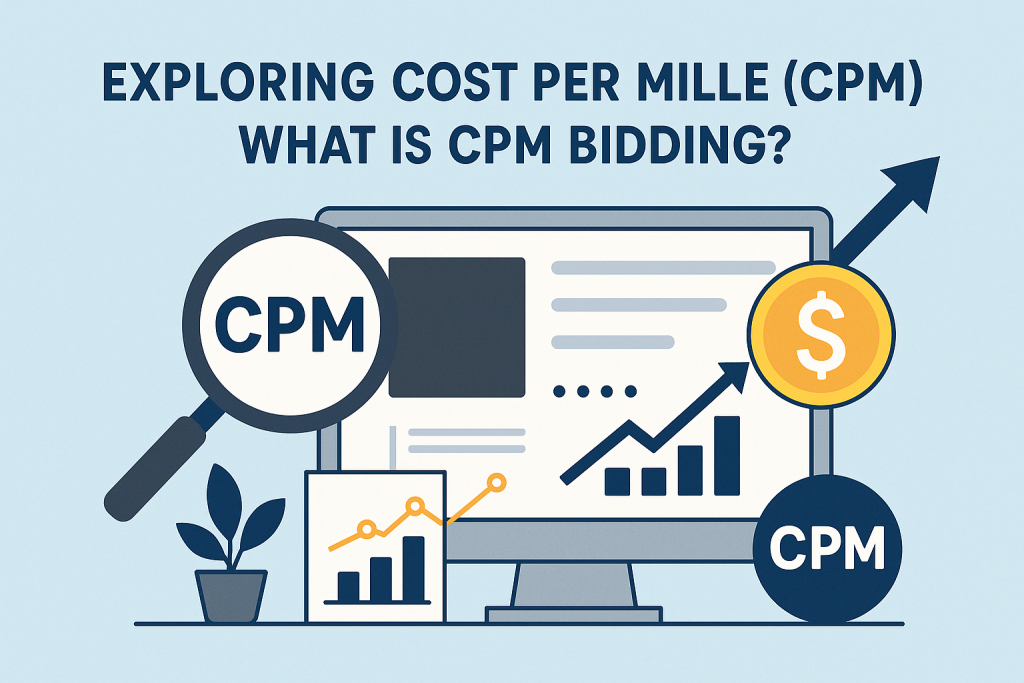
Picture this: your brand’s eye-catching ad pops up in front of thousands of potential customers. No clicks, no purchases—just eyeballs. You might think, “What’s the point? ” But in the world of digital marketing, visibility is currency, and impressions can be just as valuable as conversions—when you know how to leverage them. This is the essence of Cost Per Mille (CPM) advertising. It’s not about chasing clicks; it’s about planting seeds. Whether you’re launching a new product or boosting brand recall, CPM is the metric that tells you how much you’re paying to get your brand in front of 1,000 people. At Speed Dot 360, we’ve seen firsthand how strategic CPM campaigns—backed by smart PPC advertising management—can amplify digital presence and build long-term brand equity. But there’s more to CPM than just impressions. To use it effectively, you need to understand how it works, when to use it, and how to bid wisely. Let’s unpack everything you need to know about CPM and CPM bidding and how it fits into your broader digital strategy. What Is Cost Per Mille (CPM)? Cost Per Mille, commonly referred to as CPM, is an advertising metric that reflects how much an advertiser pays for 1,000 ad impressions. The term “mille” means “thousand” in Latin, which is why you’ll often see CPM discussed in reference to views, not clicks. If your CPM is $6, that means you’re paying $6 every time your ad is displayed 1,000 times, regardless of whether anyone engages with it. CPM is foundational in campaigns focused on brand awareness, not immediate conversion. This metric is widely used in display advertising, video ads, social media promotions, and mobile campaigns. It’s favored by marketers who want to make sure their brand is seen by the right audience—even if it doesn’t lead to an instant action. Why Is CPM Important in Digital Campaigns? While metrics like CPC (Cost Per Click) and CPA (Cost Per Acquisition) get most of the attention for conversion-focused efforts, CPM is the go-to for visibility. It supports the top of the funnel—when your goal is to introduce your brand, build recognition, and generate familiarity before someone clicks. A campaign optimized for CPM helps you do things like promote a new product, highlight a seasonal offer, or run a compelling video on platforms like YouTube or Facebook. This is especially relevant for a digital branding agency looking to help clients establish market presence at scale. Think of CPM as the fuel for recall. The more people see your message, the more likely they are to remember it when it’s time to make a decision. How to Calculate CPM The calculation for CPM is straightforward and assists you in evaluating the competence of your ad expenditure: CPM = (Total Campaign Cost ÷ Total Impressions) × 1,000 For example, if you spent $500 and received 100,000 impressions, your CPM is: (500 ÷ 100,000) × 1,000 = $5.00 This tells you that you’re spending $5 to reach 1,000 viewers. You can use this figure to compare platforms, creatives, or targeting methods, helping refine your strategy based on ROI and visibility impact. What Is CPM Bidding? CPM bidding is the method by which advertisers compete in digital ad auctions based on the amount they’re willing to pay per 1,000 impressions. In contrast to CPC bidding (which focuses on clicks), CPM bidding simply says: “Here’s what I’ll pay to be seen.” There are two common types of CPM bidding: Manual CPM With manual CPM bidding, you decide the maximum amount you’re willing to pay per 1,000 views. This gives you control but also requires constant optimization to avoid underspending or overspending in competitive environments. Viewable CPM (vCPM) In this model, you’re only charged when your ad is actually visible on the screen for a specific time period (typically one second or more). This ensures that you’re not paying for impressions that users never actually see—such as those hidden below the fold. Both bidding options are useful depending on your goals, and both are staples in advanced PPC advertising management strategies. CPM vs CPC vs CPA: Choosing the Right Model Each bidding model serves a different marketing goal. A smart campaign often blends these bidding strategies. For example, you might use CPM to introduce a product, CPC to drive traffic to a landing page, and CPA to close sales. When Should You Use CPM? CPM is a strong fit for campaigns that are designed to: If you’re working with a digital branding agency, you’ll often see CPM strategies used in pre-launch or rebranding phases, when it’s essential that your audience becomes familiar with your identity before you begin pushing for conversions. Benefits and Drawbacks of CPM Campaigns The main benefit of CPM is its cost-effective reach. If your targeting is dialed in and your creative is engaging, you can get your brand in front of thousands for a relatively low cost. It also makes campaign performance easy to benchmark since you’re measuring visibility rather than engagement. That said, CPM campaigns are not built for quick wins. Because you’re not paying based on clicks or actions, ROI may take longer to track, and your success is directly proportional to the potential of your ad design and targeting. That’s why partnering with experts in PPC advertising management can help you fine-tune the performance of your campaigns—balancing visibility with strategic intent. Tips for Running a High-Impact CPM Campaign To succeed with CPM, it’s not enough to throw money at impressions. Your ad creative must be visually striking and aligned with your messaging goals. Headlines, imagery, and design should stop the scroll and resonate within seconds. Audience targeting is equally critical. Even the best ads underperform when delivered to the wrong people. Use precise demographic, behavioral, and geographic filters to ensure relevance. Lastly, always test. Run A/B tests with different creatives, ad placements, and audience segments. CPM is all about scale, and scaling what works starts with iteration. Final Thoughts: Visibility That Converts While CPM isn’t always the right choice
Plan Your Website Structure With Speed Dot 360 | A Step-by-Step Guide to Boost UX and SEO
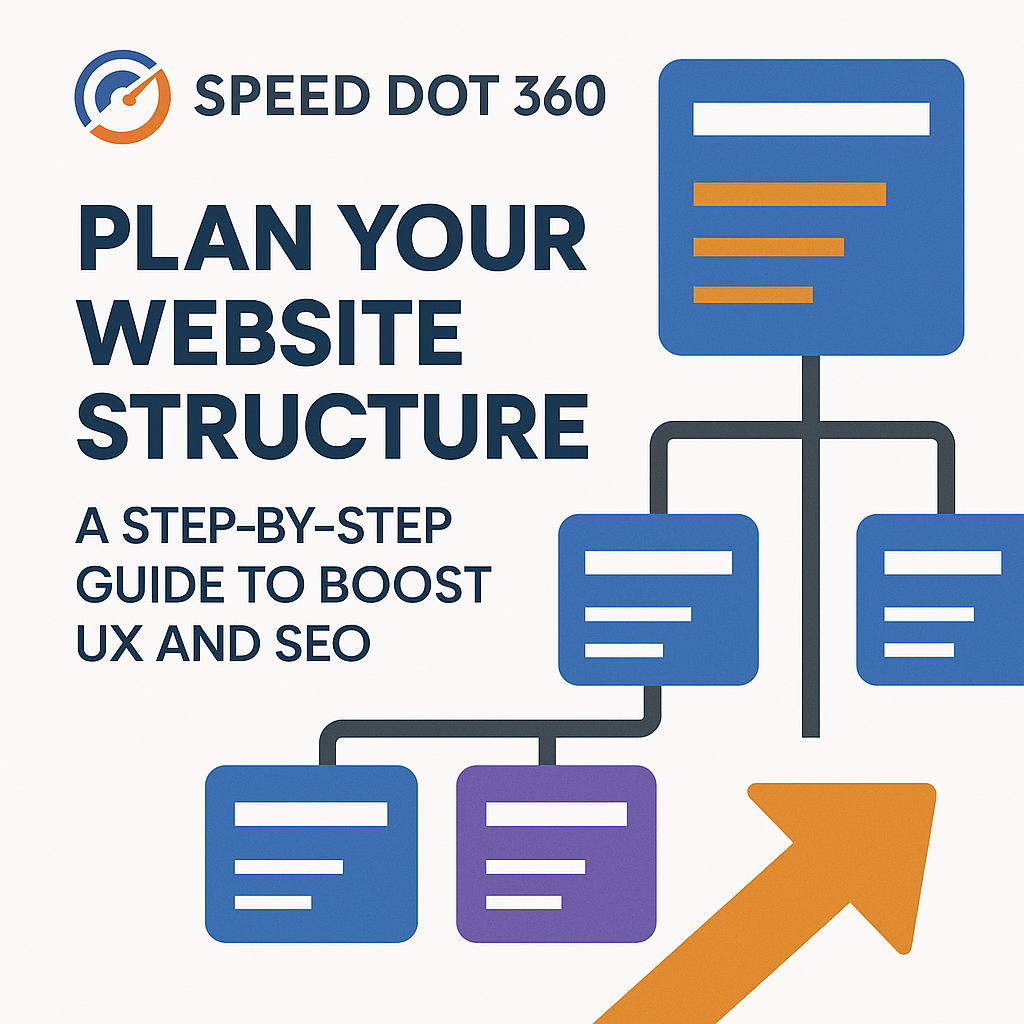
In today’s digital-first world, a website that looks good but doesn’t perform is a liability. Many businesses invest in sleek designs or flashy visuals but forget about one of the most crucial elements of a high-performing website—its structure. If your content is hard to find, navigation feels clunky, or pages are buried beneath layers of poor hierarchy, both your visitors and search engines will leave. This is where Speed Dot 360 helps transform confusion into clarity. Backed by years of experience in custom web development and responsive website design, we’ve developed a tried-and-true method to structure websites for both humans and algorithms. In this step-by-step guide, we walk you through the foundational process of building a site that is intuitive, scalable, SEO-friendly, and designed with the user in mind. Step 1: Begin With Business and User Alignment Before a single wireframe is built or a sitemap is drawn, we start by understanding two key things: your business goals and your audience’s expectations. It sounds basic, but it’s often overlooked. Are you aiming to generate leads, showcase a portfolio, or build an ecommerce platform? Knowing this determines how your homepage, menus, and landing pages are prioritized. Likewise, your audience’s journey on the site should feel logical and seamless. A visitor looking for pricing shouldn’t have to dig through five pages. That’s why our process at Speed Dot 360 always starts with user-first thinking—laying the foundation for a structure that feels natural from the first click. Step 2: Design the Hierarchy Intentionally Think of your site as a pyramid. At the top is your homepage, and beneath it are the core content categories, followed by subcategories and supporting pages. But a pyramid isn’t just about shape—it’s about clarity. Search engines, especially Google, prefer flat site structures where most pages are accessible within a few clicks. Our team helps streamline your architecture so your most important content is never too far away—improving both crawlability and user experience. Rather than overcomplicating with endless submenus and deep layers, we organize your content into clear categories that are easy to navigate, even on a mobile device—thanks to our focus on mobile-friendly website design. Step 3: Navigation That Guides and Converts Navigation is more than just a menu. It’s your website’s GPS. Poor navigation is one of the fastest ways to lose a visitor, and it’s a common cause of high bounce rates. We build navigation systems that align with your sitemap. Whether it’s a top-level nav bar, a sticky menu, or contextual internal links within the content, our focus is on guiding users to the right destination with minimal friction. Instead of relying on dropdown after dropdown, we focus on clarity: simplified labels, prioritized links, and smooth mobile interactions—key ingredients in responsive website design that keep visitors engaged on every screen. Step 4: URLs That Make Sense (To Users and Search Engines) Your website’s URLs are its street addresses. A clean, keyword-friendly URL structure makes a huge difference in SEO rankings and user trust. Rather than auto-generated slugs like /page?id=928, we implement semantic URLs such as /services/custom-web-development. Not only are they effortless for search engines to crawl, but they’re also more intuitive for users to remember and share. At Speed Dot 360, our developers integrate this during the build phase, ensuring every URL works with your content hierarchy, not against it. Step 5: Build for Mobile From Day One With mobile traffic making up over 60% of total web visits globally, ignoring the mobile experience isn’t an option—it’s a mistake. At Speed Dot 360, mobile-friendly website design is the default, not the afterthought. Your site structure must hold up just as well on a smartphone as it does on a widescreen monitor. That means reducing menu clutter, optimizing tap areas, streamlining loading times, and prioritizing thumb-friendly interactions. Whether your users are browsing on the go or searching for your contact info before booking a service, our team ensures your mobile structure delivers a consistently excellent experience. Step 6: Connect Your Content Strategically Internal linking is the secret weapon of site architecture. It’s what keeps users exploring your site and allows Google’s bots to understand the relationship between your pages. Rather than stuffing every blog post with random links, we craft strategic pathways between related content—especially between cornerstone pages and supporting blog entries. This not only helps with SEO but encourages deeper engagement from visitors who want more. When paired with a strong content plan, this structure also helps build authority around topics relevant to your niche. Step 7: Use Real-Time Data to Refine the Flow A well-structured website doesn’t just happen once and stay that way forever—it evolves. Post-launch, we use tools like Google Analytics and Hotjar to monitor how users move through your site. Where do they click? Where do they drop off? Are they reaching key conversion points? These insights allow our team to make informed updates, test new navigation strategies, or adjust the layout for better flow. As a performance-driven UI/UX design agency, we don’t guess—we optimize based on real behavior. Step 8: SEO-First, Always While UX is vital, structure without SEO is like building a road with no signs. That’s why our structures are SEO-first from the blueprint. We help ensure each page is indexed properly, structured for relevance, and designed to answer searcher intent. This includes schema markup, logical heading hierarchies, optimized category pages, and XML sitemaps that help search engines crawl effectively. Good structure supports great SEO. It’s not just about showing up—it’s about staying visible. Why Partner with Speed Dot 360? Speed Dot 360 isn’t just about building websites—it’s about engineering a digital ecosystem. From smart information architecture to intuitive flow, from clean code to conversion-ready layouts, we blend custom web development with deep UX insight. Whether you’re launching a new business, scaling an enterprise site, or revamping your current structure, we help you build something that grows with your goals—and your users. Conclusion Your website’s structure is more than a backend consideration—it’s a frontline experience that impacts
How Long Should a Blog Article Be? The Strategic Answer to Ranking High
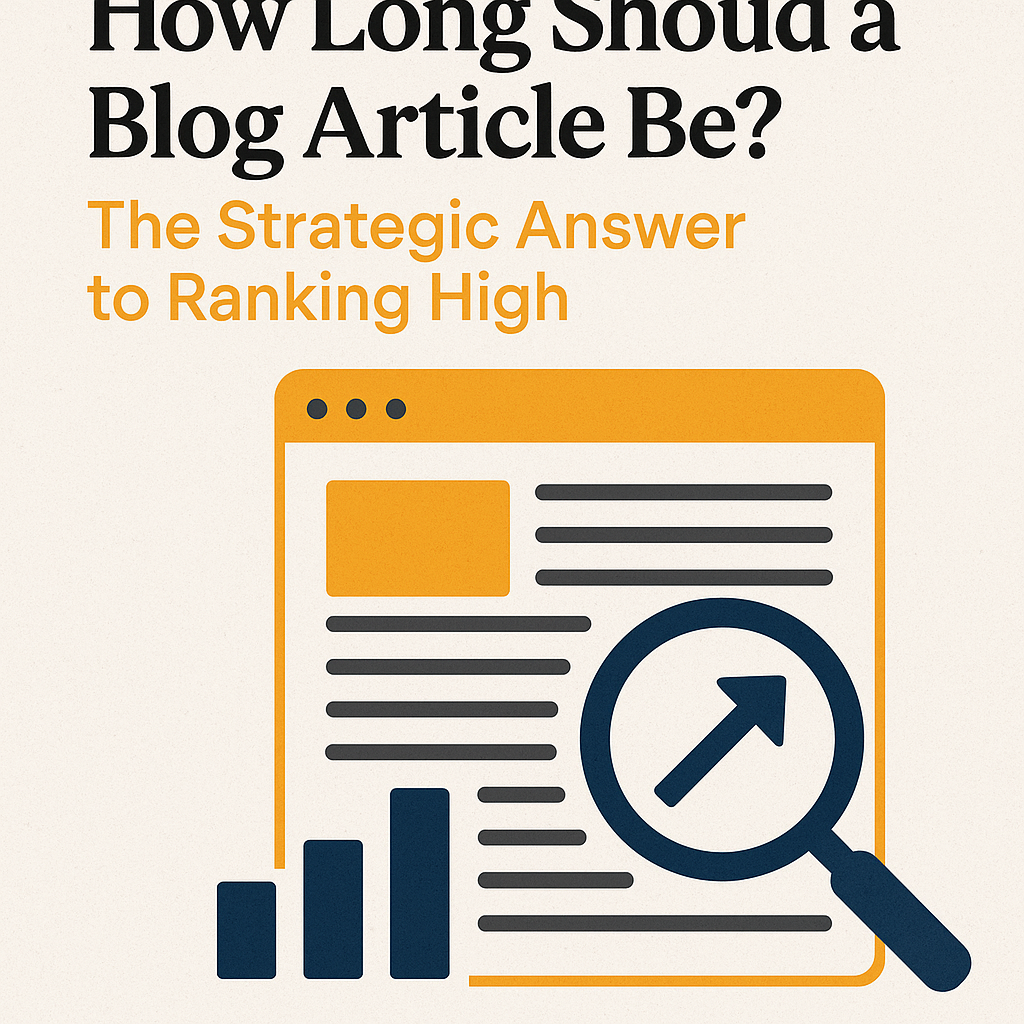
In an age of information overload, attention spans are shorter—but paradoxically, search engines love long-form content. So, how long should your blog articles be if your goal is to rank high on Google? Spoiler alert: There’s no one-size-fits-all answer. However, there is a strategic sweet spot based on content purpose, competition, and search intent. In the realm of SEO optimization services, understanding the ideal blog length is a foundational component of successful content strategy. Combined with effective on-page SEO strategies and complementary off-page SEO solutions, the right word count can drastically improve your visibility and traffic. Let’s dive into what the data—and the experts—actually say. What Studies Say About Blog Length? Numerous studies have analyzed the relationship between blog length and Google rankings. Here’s what the latest data reveals: Takeaway: While quality always trumps quantity, longer posts typically offer more comprehensive information, improved keyword targeting, and better opportunities for internal linking—all crucial for SEO. Why Longer Blog Posts Rank Higher (When Done Right) 1. Depth = Relevance Google’s algorithm favors content that thoroughly answers the user’s query. A 500-word blog may skim the surface, but a 2,000-word post is more likely to address multiple angles, subtopics, and related questions. 2. More Keywords, Naturally Longer posts allow more semantic keyword integration without resorting to keyword stuffing. This helps you rank for multiple variations of your focus keyword. 3. Enhanced Engagement Signals If your content is structured well, users will spend more time on your page, mitigating bounce rates and increasing dwell time—two key engagement signals Google considers. 4. Linkability Comprehensive guides are more likely to earn backlinks, which directly support your off-page SEO solutions by building domain authority. When Shorter Blog Posts Work Best Not all content needs to be a 2,000-word marathon. Short-form blogs (300–800 words) still have a place—especially when: These posts can still support SEO when backed by strong on-page SEO strategies such as optimized metadata, internal linking, schema markup, and mobile-first formatting. How to Determine the Right Length for Your Blog Let’s break it down by content type and intent: Blog Type Ideal Length Purpose Pillar Pages / Ultimate Guides 2,000–3,500 words Rank for high-volume, competitive keywords How-to / Tutorials 1,200–2,000 words Detailed step-by-step instructions Thought Leadership / Opinion 1,000–1,500 words Showcase expertise, drive engagement Product/Service Pages 700–1,200 words Inform and convert FAQs / Short Updates 300–800 words Quick answers and updates Use competitor research: Google your topic and analyze the average length of top-ranking posts. Your goal is to match—or exceed—the depth they offer without adding fluff. Structuring Long-Form Content for Maximum Impact Long posts can become overwhelming if not formatted properly. Here’s how to make yours digestible and engaging: Use Subheadings (H2, H3, H4) Break content into logical sections so readers can scan or jump to what they need. Incorporate Visuals Infographics, images, charts, and videos break up text and boost comprehension. Optimize for Mobile Responsive website design is a must. Mobile-friendly formatting reduces bounce rates and improves ranking potential. Add Internal Links Boost engagement and page views by linking to related articles, products, or resources on your site. CTA Placement Include relevant Calls-to-Action to guide readers toward your conversion goals (newsletter, contact form, download, etc.). Keyword Strategy: Pairing Length with SEO Long-form content offers more room to target: Use tools like SurferSEO, SEMrush, or Clearscope to analyze keyword gaps and match searcher intent. But don’t forget: without proper on-page SEO strategies—like optimized title tags, meta descriptions, and schema markup—your masterpiece may never be seen. Promoting Your Blog with Off-Page SEO Solutions Even the most well-written, SEO-optimized blog needs external signals to perform. Use These Tactics: These off-page SEO solutions build credibility, drive referral traffic, and enhance your site’s authority over time. How Blog Length Affects Ranking Timeline Blog length also plays a role in how fast you rank: Pair your publishing efforts with consistent analytics tracking (Google Analytics, Search Console) to measure performance and refine strategy. Final Thoughts: It’s Not Just About Word Count While length is important, quality, intent, and user experience matter more. A well-researched 1,500-word article with rich insights and clean formatting will outperform a 3,000-word post filled with fluff. At SpeedDot360, our SEO optimization services are designed to find the perfect balance between content depth, keyword relevance, and conversion strategy. Whether you’re creating blog content for awareness, authority, or lead generation, we help you structure and scale your efforts to perform. FAQs 1. Is 500 words too short for a blog post?Yes—for most SEO purposes. While it can work for quick updates or FAQs, longer posts perform better for competitive keywords. 2. Can blog posts be too long?Only if they’re not valuable, if your content is repetitive or lacks focus, readers (and Google) will tune out. Stick to relevance. 3. What’s the ideal blog frequency for SEO?Publishing 2–4 high-quality posts per month is a good baseline. Consistency matters more than quantity. 4. How do I promote long-form blog posts?Use a mix of email, social sharing, backlink outreach, and syndication. Combine with off-page SEO solutions to amplify reach. 5. Should every blog be 2,000+ words?No. Let the topic and competition guide your length. Use data, not guesswork, to determine the ideal structure.
Is it Worth It? How to Evaluate the Success of Your Website Redesign
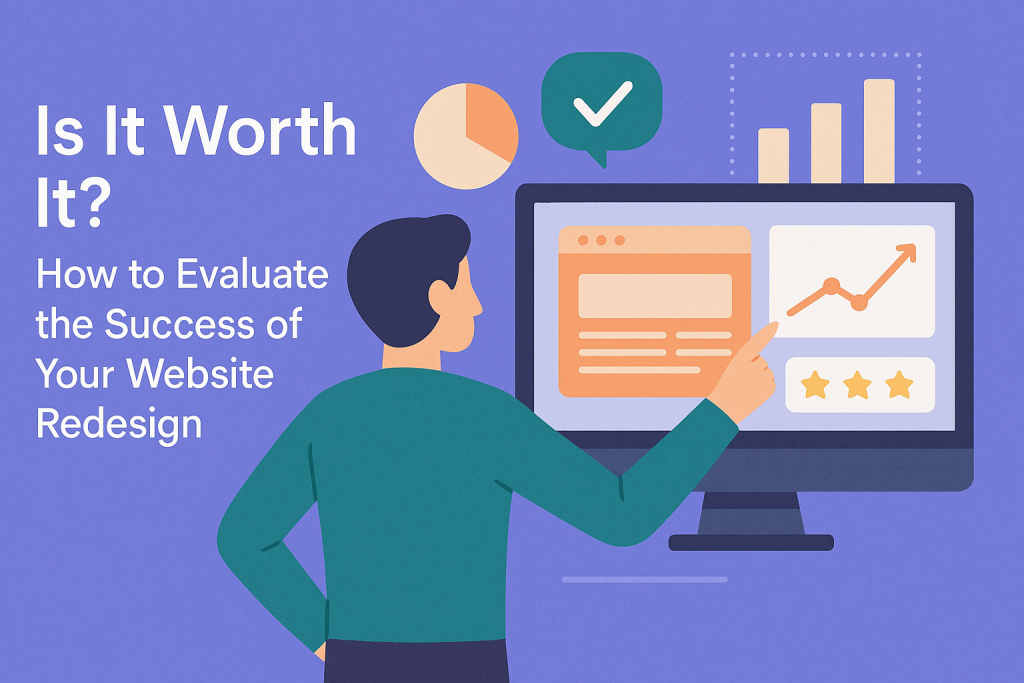
You’ve invested time, energy, and capital into website redesign services, maybe even revamped your brand entirely. But now that your new site is live—what’s next? Was the investment worth it? A website redesign is more than a visual facelift. It’s a strategic move aimed at boosting performance, enhancing user experience, and increasing conversions. However, to ensure you’ve actually moved the needle, you must measure success through clear, actionable KPIs. In this blog, we’ll explore the most effective ways to evaluate your redesign and determine whether it delivered true ROI—or just pretty pixels. 1. Set Clear Goals Before You Launch The first step to evaluating success is knowing what you’re measuring against. Every redesign should be aligned with specific business objectives. Common Goals Include: If your redesign didn’t begin with goal-setting, start now by defining what “success” looks like for your brand. 2. User Experience Metrics: Are Visitors Enjoying the New Design? User Experience (UX) is at the forefront of every effective redesign. Good design guides users toward actions—great design makes those actions frictionless. Key UX KPIs: If these metrics improved, then your custom web development and UX decisions are paying off. 3. Conversion Rates: Is the New Design Driving Action? The primary goal for most websites is to convert visitors—whether that means purchases, sign-ups, downloads, or form submissions. Comparing pre- and post-redesign conversion rates is critical. Metrics to Watch: Tip: Use A/B testing tools like Google Optimize to experiment with CTA placements, layouts, and messaging post-redesign. 4. SEO Performance: Did Your Rankings Survive the Makeover? A poorly executed redesign can sabotage search engine visibility. A well-executed one will maintain or even enhance it. SEO Metrics to Evaluate: Working with a developer skilled in responsive website design ensures mobile-first optimization, which is now critical for Google rankings. 5. Mobile Responsiveness: Is It Truly Mobile-First? With more than half of global traffic coming from mobile, your redesign must excel on smartphones and tablets. Test With: If mobile bounce rates have dropped and engagement has increased, your responsive website design is doing its job. 6. Website Speed: Faster = Better Speed kills—especially slow websites. Site performance plays a major role in both UX and SEO. Use Tools Like: Improve By: If your bounce rate is dropping and conversion rate is rising, performance upgrades from your website redesign services are likely a key factor. 7. Heatmaps and Session Recordings: Watch Real Users in Action Numbers are valuable, but behavioral tools offer goldmines of insight. Tools to Use: Watch how users navigate, where they get stuck, and where they click. These qualitative insights validate your redesign decisions—or highlight where tweaks are needed. 8. Accessibility Improvements: Inclusive Design = Better Results Designing for accessibility not only expands your audience—it often leads to better UX for everyone. Evaluate: Accessibility improvements can indirectly impact bounce rate, engagement, and conversion rates—especially on forms and navigation menus. 9. Technical Health: Is Your Backend Built to Last? A polished front end needs a robust back end. Quality custom web development ensures fast load times, fewer errors, and a smoother user journey. Key Checks: If your site is throwing fewer errors and your time-to-first-byte (TTFB) is faster, the backend overhaul was a win. 10. ROI: The Ultimate Success Indicator All your metrics feed into one final judgment: return on investment. Did the money you spent on redesign actually increase revenue or leads? Formula:ROI = (Net Profit from Redesign – Cost of Redesign) / Cost of Redesign x 100 Track long-term benefits like: A high ROI means your website redesign services investment was absolutely worth it. 11. Stakeholder and Customer Feedback: Gut-Checks Matter Too Don’t ignore qualitative feedback. What do customers, clients, and internal teams say about the new design? Collect Feedback From: Sometimes the clearest signals of success come from the people actually using your site. Measure What Matters, Then Iterate The only way to know if your redesign was “worth it” is by measuring real results. Evaluate success based on a mix of hard data and human feedback. Look beyond the aesthetics and dive deep into UX, SEO, performance, and ROI. At SpeedDot360, our website redesign services, responsive website design, and custom web development ensure your digital investment pays dividends. We don’t just design websites—we build platforms that drive growth.
Ecommerce Metrics That Help You Turn Data Into Revenue
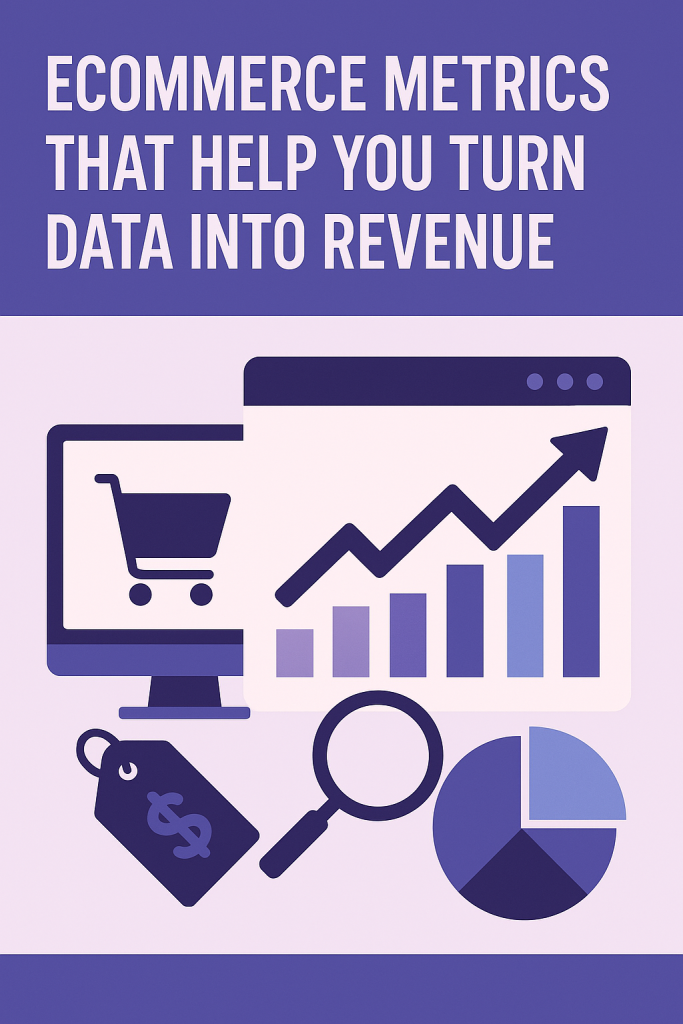
In the competitive world of ecommerce, simply launching a store with a sleek online store design isn’t enough. To drive scalable growth, you need to measure what matters. That’s where ecommerce metrics come in. They are not just numbers—they are critical insights that, when used right, can lead to smarter decisions and more revenue. Think of your data as a GPS for your ecommerce business. Without tracking the right metrics, even the best custom ecommerce solutions won’t reach their full potential. Let’s dive into the most important ecommerce metrics that bridge the gap between raw analytics and real profit. 1. Conversion Rate (CR): The Core of Ecommerce Growth Conversion rate is the most obvious yet most underutilized ecommerce metric. It tells you how many of your visitors are actually becoming customers. If your beautifully built ecommerce website design isn’t converting, it’s not doing its job. Formula:Conversion Rate = (Number of Sales / Number of Visitors) x 100 Tips to Improve: 2. Customer Acquisition Cost (CAC): Know What You Pay to Get Customers CAC is what it costs to acquire a new customer, including marketing, sales, and advertising expenses. High CAC with low return is a sign of inefficiency. Formula:CAC = Total Marketing Costs / Number of New Customers Acquired Optimization Strategies: 3. Average Order Value (AOV): Increase the Cart, Increase the Revenue AOV reveals the average amount spent each time a customer places an order. It’s easier to increase the size of the cart than to acquire a new customer. Formula:AOV = Total Revenue / Number of Orders Growth Hacks: 4. Customer Lifetime Value (CLV): Think Long-Term, Not Just Per Sale CLV measures the total amount of money a customer is expected to spend with your business over their entire relationship with you. It helps determine how much you should spend on acquisition and retention. Formula:CLV = AOV × Purchase Frequency × Customer Lifespan How to Maximize CLV: 5. Shopping Cart Abandonment Rate: A Hidden Leak in the Funnel Almost 70% of ecommerce shoppers abandon their carts. That’s a lot of lost potential revenue. This metric tells you where people are bailing out and why. Key Fixes: 6. Return on Advertising Spend (ROAS): Are Your Ads Working? ROAS shows how much revenue you generate from every dollar spent on advertising. It’s crucial to understand which campaigns are profitable and which aren’t. Formula:ROAS = Revenue from Ads / Cost of Ads Best Practices: 7. Site Traffic: Don’t Just Count Visits—Segment Them Getting people to your store is step one, but understanding who they are, where they come from, and what they do is next-level insight. Track: Use these insights to optimize both ecommerce SEO services and paid strategies. 8. Bounce Rate & Exit Rate: Understand Why People Leave Bounce rate shows single-page visits, while exit rate reveals where users are leaving your site. High bounce or exit rates from product pages? You’ve got a UX or trust issue. Reduce Bounce Rates: 9. Product Performance Metrics: What’s Hot and What’s Not Understanding which products sell well—and which don’t—is critical for inventory, marketing, and pricing decisions. Metrics to Watch: Apply this data to upsell tactics and feature high-performing products on homepage or ad creatives. 10. Email Marketing KPIs: Your Revenue-Generating Engine Email marketing isn’t dead—it’s thriving when done right. Track metrics like open rates, CTR, and revenue per email to refine campaigns. Metrics to Improve: Personalization is key. Use customer behavior and segment your list accordingly. 11. Customer Retention Rate: Growth Isn’t Just Acquisition Repeat customers are more profitable. Tracking retention gives insight into customer satisfaction and loyalty. Formula:CRR = ((E-N)/S) x 100Where:E = Customers at endN = New customersS = Customers at start Boost Retention: 12. Net Promoter Score (NPS): Would They Recommend You? This particular survey asks customers how likely they are to recommend your store. It’s a strong indicator of customer experience and brand loyalty. How to Use NPS: 13. Site Speed & Mobile Responsiveness: Underrated but Crucial A slow site means lost sales. Google also factors in site speed for rankings, impacting your ecommerce SEO services. Tools: Compress images, use caching, and choose fast hosting for best results. 14. Checkout Funnel Metrics: Find and Fix Drop-Offs Use Google Analytics or heatmaps to see where users drop off in your checkout process. Streamlining these steps increases your overall conversion rate. Focus Areas: 15. On-Site Search Metrics: Uncover What Shoppers Really Want Track what users are searching for and whether they find it. This helps in optimizing custom ecommerce solutions like product categorization and inventory. Track: Use this data to create new collections, improve navigation, or launch new products. Conclusion Data without action is just noise. By monitoring the right ecommerce metrics, you can steer your store toward higher conversions, lower acquisition costs, and more loyal customers. Whether you’re refining your ecommerce website design, investing in smarter ecommerce SEO services, or developing custom ecommerce solutions, metrics are the fuel for revenue growth.
Marketing Stats You Must Know in 2025
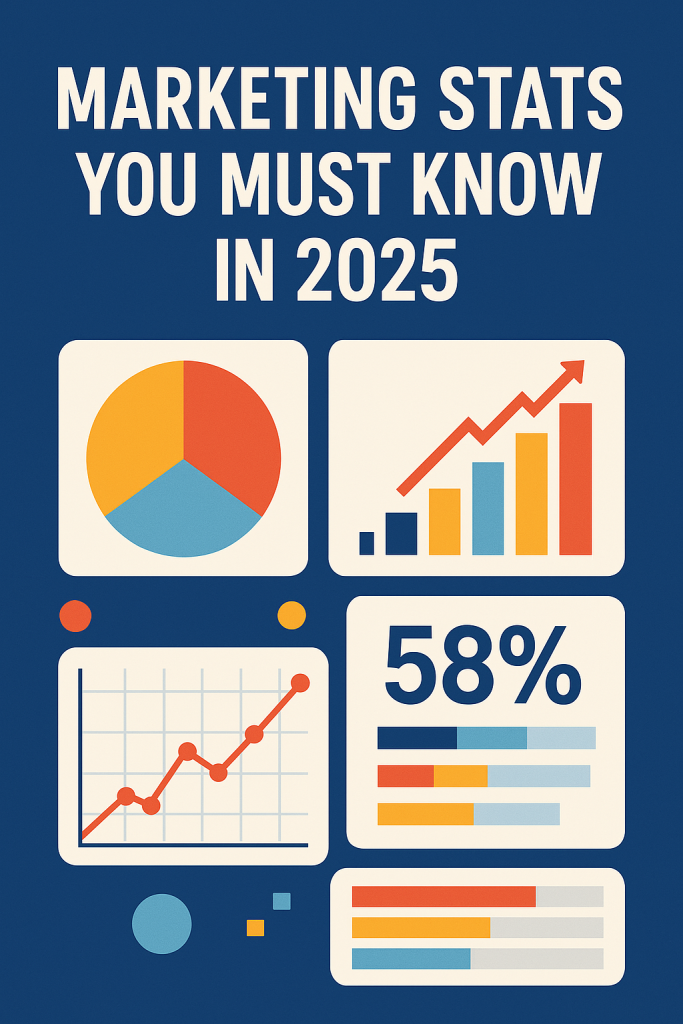
Marketing is more data-driven than ever, and staying ahead in 2025 means understanding the key statistics shaping digital strategies. From social media management to PPC advertising management, brands must adapt to emerging trends and evolving consumer behaviors to remain competitive. This article explores the most crucial marketing statistics for 2025, offering insights into digital advertising, content strategies, social media, email marketing, and more. Whether you’re a marketer, a business owner, or part of a content marketing agency, these numbers will guide your decision-making in the year ahead. The State of Digital Marketing in 2025 Digital marketing is continuing its rapid evolution, with businesses increasing their online advertising budgets to engage consumers effectively. Here are some of the key stats defining the industry: With digital advertising growing, businesses must invest in AI-driven strategies, data analytics, and targeted advertising to maximize ROI. Social Media Marketing: The Driving Force of Digital Strategies Social media remains a powerhouse for customer engagement, brand awareness, and sales. Platforms continue to evolve, and businesses must stay agile to keep up with changing trends. To stay competitive, businesses should focus on social media management, leveraging paid and organic strategies to enhance their digital presence. Email Marketing: Still One of the Highest ROI Channels In the evolving world of instant messaging apps and social media, email marketing remains a prominent digital marketing channel. Businesses that invest in automated, data-driven email marketing campaigns will see better customer engagement and higher conversion rates. Maximizing ROI with Paid Search With increasing competition in digital marketing, PPC advertising management is more crucial than ever for businesses aiming for higher conversions. For businesses looking to scale, PPC advertising management should focus on data-driven strategies, A/B testing, and AI-powered ad optimizations. SEO & Content Marketing: The Key to Long-Term Growth SEO and content marketing continue to thrive for organic visibility and brand authority. As search algorithms become more advanced, businesses need to invest in high-quality, intent-driven content. Businesses working with a content marketing agency should prioritize evergreen content, SEO-optimized blogs, and multimedia integration to improve organic traffic. AI and Automation: The Future of Marketing Efficiency AI is reshaping the marketing landscape by improving efficiency, personalization, and customer experiences. Marketers should embrace AI-powered automation tools to enhance efficiency and drive better results across digital channels. Capturing the Mobile-First Audience With mobile usage continuing to rise, brands must prioritize mobile-first marketing strategies. For businesses, optimizing their digital assets for mobile-first experiences will be critical to staying relevant. Video Marketing: Dominating the Digital Space Video continues to be one of the most engaging content formats, with consumers preferring visual storytelling over static content. To stay ahead, businesses should invest in high-quality video content to enhance brand storytelling and audience engagement. Conclusion Marketing in 2025 is all about leveraging data, automation, and personalization to create effective digital campaigns. By staying informed about these marketing statistics, businesses can make strategic decisions that drive growth, engagement, and revenue in 2025.
How Much Do Ads Cost in 2025?
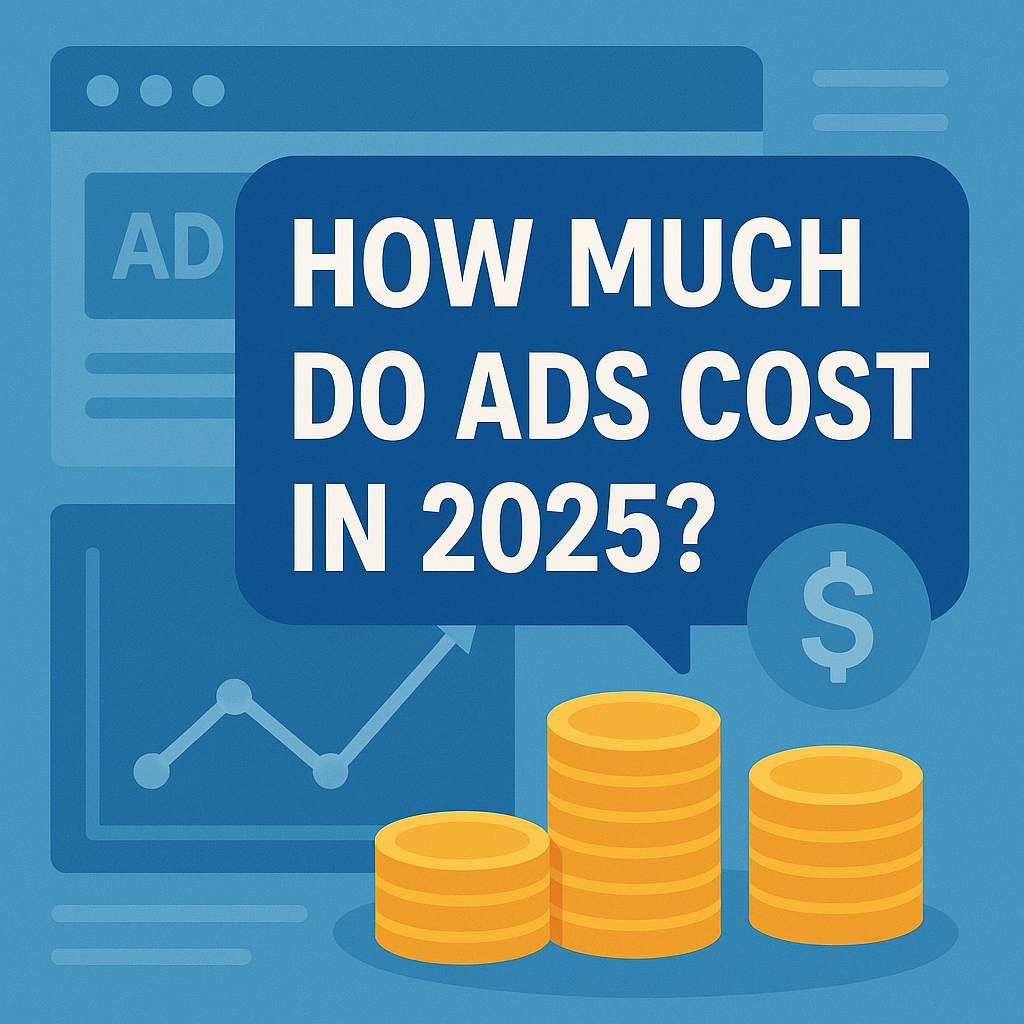
In the flustering world of inflation, businesses can oversee a considerable difference in online advertisement, and as 2025 unfolds, businesses must adapt to new pricing models, trends, and bidding strategies. Whether you’re running PPC advertising management, leveraging social media management, or investing in Facebook ad campaigns, understanding ad costs is crucial for maximizing returns. But how much does advertising actually cost in 2025? Are prices going up, or are there ways to optimize spending? In this article, we’ll break down the latest ad pricing trends across different platforms, analyze the key factors driving these costs, and offer insights on how businesses can effectively allocate their marketing budgets. The Evolution of Digital Advertising Costs The cost of advertising is never static. It fluctuates due to platform competition, consumer behavior, economic conditions, and even technological advancements. Here’s what’s shaping ad prices in 2025: These factors create a complex pricing environment where advertisers must be strategic with their spending. Google Ads Costs in 2025 Google remains the largest digital advertising platform, but costs vary based on industry, competition, and ad format. What Influences Google Ads Pricing? To control expenses, businesses should work with a content marketing agency to improve landing page relevance and Quality Scores. Facebook & Instagram Ads Costs in 2025 Meta’s platforms (Facebook & Instagram) remain essential for digital marketing, with costs rising due to increased competition and evolving targeting options. Key Pricing Factors for Facebook Ads: Advertisers investing in Facebook ad campaigns should prioritize creative testing and audience segmentation to improve ROI. LinkedIn Ad Costs in 2025 For B2B businesses, LinkedIn is a go-to platform, but it remains one of the most expensive advertising options. Given LinkedIn’s higher costs, B2B companies should focus on email marketing campaigns and retargeting strategies to complement LinkedIn ads and reduce spending. TikTok & YouTube Ad Costs in 2025 Video-based platforms continue to dominate digital advertising. TikTok Ads YouTube Ads Short-form videos outperform static ads, making social media management critical for brands looking to boost engagement and ad efficiency. Email Advertising Costs in 2025 While many businesses overlook email marketing, it remains a highly profitable channel. Email marketing campaigns provide an affordable way to nurture leads and drive conversions without relying on expensive paid ads. What Drives Advertising Costs in 2025? Several key factors influence digital advertising expenses: 1. Industry Competition Certain industries (e.g., legal, finance, SaaS) see higher CPCs due to fierce competition. 2. Bidding Strategies Automated bidding increases efficiency but can also drive up costs if not monitored. 3. Ad Relevance & Quality A strong Quality Score (Google) or Relevance Score (Facebook) can lower costs significantly. 4. Audience Targeting Narrower targeting typically increases costs but improves conversion rates. 5. Ad Format & Placement By combining keyword research services with data-driven strategies, brands can optimize ad performance and spending. How to Lower Your Ad Costs in 2025 Want to make the most of your advertising budget? Here are some proven strategies: The Future of Ad Pricing Beyond 2025 As AI-driven ad platforms evolve, costs will continue to shift. Key trends to watch: Advertisers who adapt to these trends will be better positioned for cost-effective success. Conclusion Advertising costs in 2025 will continue to rise, but businesses that optimize their strategies can still achieve strong ROI. By staying informed and leveraging data-driven insights, brands can allocate their budgets efficiently and maximize their advertising impact in 2025.




